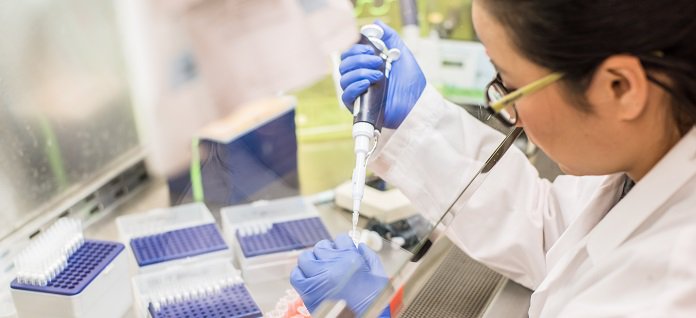
Autism research using cord blood and cord tissue has been advanced in recent times by studies at Duke University, North Carolina and Shandong Jiaotong Hospital, China.
With over 1 in 100 children in Australia today diagnosed with some level of autism, it underlines the importance of autism research which works towards new therapies to treat the condition which has a rapidly increasing prevalence and no known cure.
As reported by the Australian Autism ADHD Foundation, 30,400 Australians were diagnosed with Autism in 2003. In 2009 the number was 64,600, and in 2012 the number had grown further to 115,000. ABS data shows a continued increase to 164,000 Australians with autism in 2015 – representing a 500+% increase in just 12 years.
It is worthwhile to note that clinical diagnostic criteria changes in 2013 may have had some impact on data in this latest period. There are also suggestions that increased awareness of autism spectrum disorders (ASDs) and changes in services and attitudes are also likely to impact prevalence rates.
Autism research has come a long way to correct misconceptions around causes for the condition, including disproving suggestions of non-genetic causes such as specific immunisations1. Research has also found the heritability of ASD is 83%, further suggesting that genetics may explain the majority of the risk of ASD2.
Moreover, there is no evidence that upbringing or social circumstances cause autism3.
Pioneering studies with umbilical cord blood derived stem cells, have observed that umbilical cord blood (the blood in a baby’s umbilical cord and placenta) can promote blood flow and can assist in salvaging damaged tissues.
Cord blood is rich in endothelial stem cells and progenitor cells and can promote local blood perfusion and produce anti-inflammatory effects. Further to this, Cord Tissue (a segment of the umbilical cord) is rich in Mesenchymal Stromal Cells (MSCs), and such cells can be used for immune modulation.
There is only one opportunity to collect your baby’s cord blood and tissue – at birth
A recently completed study at Duke University, North Carolina, demonstrated the safety and feasibility of the application of cord blood for autism. Patients received their own (autologous) cord blood cells intravenously and were assessed at six and 12 months post infusion. Assessments of adverse events over the 12 months post-infusion, indicated:
Significant improvements in behaviour were found across a wide range of outcome measures. These included improvements in parent-reported measures, socialisation, communication, and adaptive behaviour scores.
Most of the observed behavioural changes occurred during the first six months and importantly were sustained between six and 12 months post-infusion. A significant finding was that children’s nonverbal IQ correlated with the change in the majority of outcome measures; i.e., higher nonverbal IQ being associated with greater improvements in behaviour4.
Study findings at Shandong Jiaotong Hospital, China, presented, for the first time, a safety and efficacy analysis of allogeneic (genetically similar but not identical) cord blood derived MSCs and cord tissue derived MSCs to treat behaviours in addition to conventional behavioural therapy in autism5.
In this study, transplantation of cord blood derived MSCs demonstrated efficacy compared to the control group; however, it was the combination of the cord blood and cord tissue derived MSCs that showed the larger therapeutic effect.
The investigators concluded that in addition to zero safety issues being noted, the transplantation of cord blood and cord tissue MSC’s may improve some behavioural symptoms and function observed in children with autism.
Following the first positive trial results using cord blood for ASD, two additional studies have been initiated by Dr. Kurtzberg. A first follow up study will evaluate the single infusion of autologous or allogeneic cord blood in patients diagnosed with ASD. The second study will evaluate the safety and feasibility of infusion of allogeneic cord tissue-derived MSC in patients diagnosed with ASD.
These studies will further complement and support the observations in the study by Lv and colleagues from Shandong Jiaotong Hospital, China.
Today, more than 40,000 cord blood transplantations6 have been performed worldwide in the treatment of over 80 conditions7. Research continues to evaluate how cord blood cells may provide new therapies for a broad number of diseases for which there is no effective treatment today, such as autism.
Expectant parents interested in learning more about storing their baby’s cord blood and tissue stem cells can access our free info pack from the link below.
1. Retrieved 13th December, 2017, from www.mcri.edu.au/users/murdoch-childrens-media/blog/autism-spectrum-disorder-facts 2. Journal of the American Medical Association, Vol. 318, No. 12, September 2017. 3. Retrieved 13th December, 2017, from www.autismspectrum.org.au/content/what-causes-autism 4. Dawson et al, Stem Cells Translational Medicine, 2017. 5. Lv et al, NCT01343511, Shandong Jiaotong Hospital, China 6. Update on umbilical cord blood transplantation, Ballen K, (2017) https://www.ncbi.nlm.nih.gov/pubmed/28928957 7. Bioinformant Industry report: Capitalising on opportunities in cord blood industry growth, www.Bioinformant.com, March 2013